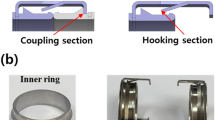Abstract
. A model to assess thrombus formation following vascular injury was evaluated using various interventional systems. The model consisted of a ‘stretchable’ shunt box that served as an arteriovenous shunt between the carotid artery and jugular vein in dogs. Arterial homografts obtained from both carotid and femoral arteries were mounted between two plastic connectors attached to either side of the shunt box. The opposing walls of the shunt box were then stretched apart to achieve the original length of the arteries. The arterial side of the box was connected to the ipsilateral carotid artery and the venous side was connected to the contralateral jugular vein. Haemostasis valves were placed at the exit ports on the venous side of the shunt box. These were used as an access to the various interventional catheters into the lumens of the homografts. Interventions were performed prior to initiating blood flow. After the interventions, 111indium-labelled platelets were injected on the arterial side of the shunt box and arterial blood flow initiated across the shunt. After one hour of circulation through the shunt box, the blood flow was interrupted, and the homografts were perfusion-fixed with glutaraldehyde and segments removed for radioactive counts and processed for histology.
This shunt box was then used to compare platelet adhesion and thrombus formation after balloon angioplasty (BA) to direct laser (LA) and laser-thermal angioplasty (LTA). A total of 28 arteries were used from seven dogs. In each experiment, one homograft was used as control, and three other homografts were treated with either BA, LA or LTA. Following the interventions, 111indium-labelled platelets were injected and circulated for one hour using the dog's native circulation. Labelled platelet counts for BA (19102±4869/cm2; mean±SE) were significantly greater than LA (7038±980/cm2), thermal LTA (5189±1961/cm2), and control (1575±541/cm2), respectively (p<0.05, ANOVA). Histology examination showed few platelets at LA, LTA and control sites whereas extensive platelet adhesion was noted at BA treated sites. The model provided a means to conduct simultaneous comparison of several interventions under similar conditions. In this case thermal treatment of the arterial homografts had the least amount of platelet adhesion.
Similar content being viewed by others
Author information
Authors and Affiliations
Rights and permissions
About this article
Cite this article
Abela, G., Hage-Korban, E., Tomaru, T. et al. A Model For Evaluation of Arterial Thrombosis Following Interventional Procedures. Lasers Med Sci 16, 141–147 (2001). https://doi.org/10.1007/PL00011344
Issue Date:
DOI: https://doi.org/10.1007/PL00011344




